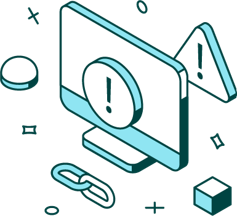Monitor Stolen and Leaked Source Code to Proactively Stop Threats
Protecting source code is an important step in safeguarding from unauthorized access, theft, and misuse. However, even with robust protection in place and no intent from malicious outsiders, proprietary source code can still be exposed. When this happens, it is important to have source code monitoring in place to protect your brand and proprietary software, and act quickly against potential threats.
According to a ZDnet report, “a scan of billions of files from 13% of all GitHub public repositories over a period of six months revealed that over 100,000 repos have leaked API tokens and cryptographic keys, with thousands of new repositories leaking new secrets on a daily basis.”
Between developing mature processes to check for these kinds of accidental dumps and searches for proprietary source code, organizations can avoid being part of the 13% at risk for damaging their own brands.

Why Source Code Monitoring Matters?
Proprietary source code can be lucrative for not only your organization but also for threat actors. Sometimes obtaining source code can be easy. For example, sometimes source code is exposed when developers add confidential information to code, intending to take it out later but accidentally leave it. Others may share their development work through convenient, and commonly used paste sites and code repositories that have been unknowingly compromised by threat actors. If this code is not carefully removed, valuable information can end up in the wrong hands. Here are some of the biggest threats from source code reveals:
- Intellectual Property Theft: Source code often contains proprietary information and if obtained by the wrong group, can have devastating consequences for the organization’s profitability and reputation.
- Data Breaches: Sensitive information such as API keys, encryption keys and database credentials can be exposed through a source code breach leading to a host of threats.
- Cyberattacks: Source code can also be a beacon to software architecture and vulnerabilities leading to compromised security and networks.
Monitoring social media sites, code repositories, and paste sites for leaked or stolen source code allows organizations to proactively respond to potential threats.
Prevent These Common Threats With Source Code Protection

There are various situations that can lead to source code exposure. Some source code leaks are unintentionally revealed, while others are stolen to carry out threats. Whether accidental or not, the following are some examples of how source code can end up in the wrong hands:
- Accidental sharing
- Threat actor abuse on paste sites and code repositories
- Someone maliciously sharing code externally
- Stolen proprietary “programming code”
PhishLabs Source Code Monitoring can pursue the shutdown of confirmed source code threats that exhibit properties indicative of fraudulent activities.

Benefits of Source Code Monitoring
Once sensitive data such as credentials or programming code is out in the open, it can be exploited by threat actors for any number of nefarious purposes. This is why staying vigilant about leaked information can provide the intel needed to create a strong defense. By identifying and mitigating risks earlier, organizations can minimize the negative impacts to their customers, partners, brand, and finances.

PhishLabs' Source Code Monitoring
PhishLabs searches for incidents containing proprietary code for inclusion in software owned or licensed by your organization. Our team monitors social media sites, paste sites, and forums for code that infringes on your brand or that exhibits properties typically used in malicious software.
Once the source code threat has been discovered and verified, PhishLabs will quickly pursue the shutdown of the confirmed source code threat. Through an extensive and trusted network, PhishLabs can do this better and faster than many others.